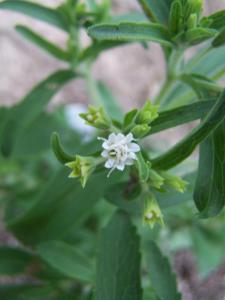Bachelor’s Button and Catnip Tea
This colorful tea has the slight flavor of green tea with a light minty aftertaste. Catnip does not taste like it smells so for those who avoid it because of that fear, your worries are unfounded. The relaxing, sedative effects of my organic catnip tea are stronger than that of any chamomile I have tried. This recipe is easy to adjust. Try adding your own herbs or omitting those I have used.

Fresh Bachelor's Button Catnip Tea in Cup
Use either dried or fresh herbs for this recipe.
- 1-2 Tablespoon/s Catnip Leaves and Blossoms
- 1/2-Tablespoon Bachelor’s Buttons Leaves
- Four Large Bachelor’s Buttons Blossoms
Pour hot, not boiling, water over the herbs. Cover with a non-porous lid and allow the tea to steep for 15 minutes. Some of the oils from the catnip leaves will collect on the lid. I lick this off before enjoying my tea. Waste not.
This recipe makes one eight-ounce cup of tea.
Use either dried or fresh herbs for this recipe.
1-2 Tablespoon/s Catnip Leaves
½-Tablespoon Bachelor’s Buttons Leaves
Four Large Bachelor’s Buttons Blossoms
One Stevia Leaf
Pour hot, not boiling, water over the herbs. Cover with a non-porous lid and allow the tea to steep for 15 minutes. Some of the oils from the catnip leaves will collect on the lid. I lick this off before enjoying my tea. Waste not. J
This recipe makes one eight-ounce cup of tea.



